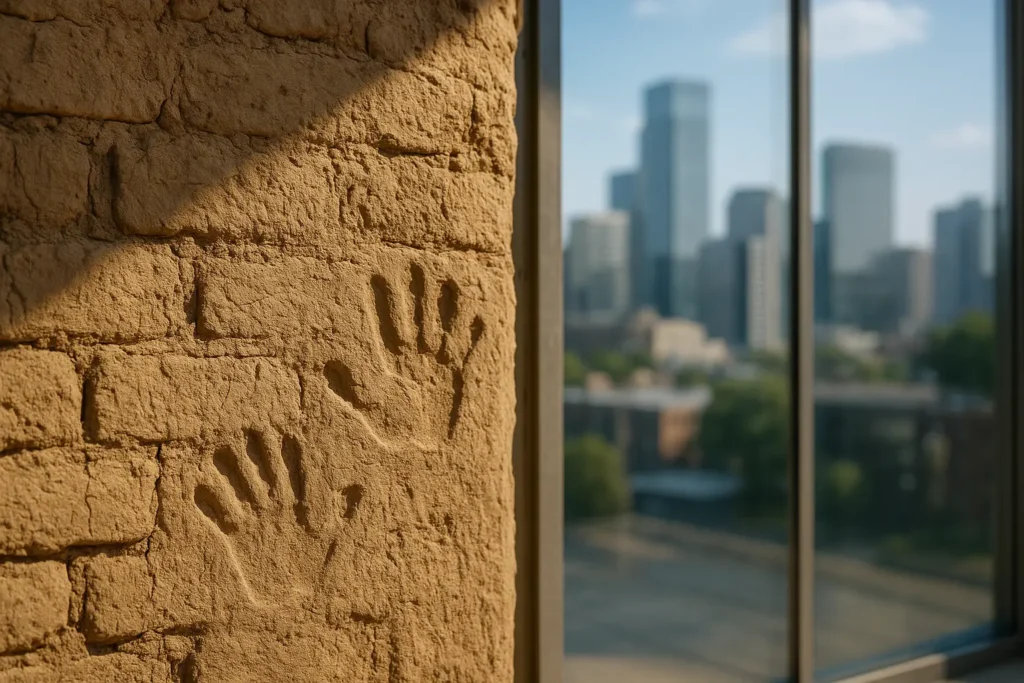In the ever-evolving tapestry of architectural design, building materials play a pivotal role in shaping our built environment. As we navigate the nuances of modern design and sustainability, our choices are influenced not just by aesthetics but by the stories these materials tell. From the ancient clay walls that have witnessed the rise and fall of civilizations to the cutting-edge smart glass that interacts with light and weather, these materials reflect our artistic and technological aspirations. Today, we embark on a journey through time, exploring the evolution of materials that have defined and continue to redefine the structures we inhabit.
The Timeless Allure of Clay and Wood
The roots of construction lie deep within the earth, beginning with the humble yet enduring clay. For centuries, clay has been the cornerstone of shelter, offering remarkable insulation and durability. Its malleability allows for versatile applications, from robust adobe structures to intricate pottery.
Clay Walls: A Legacy of Sustainability
Utilized by civilizations across the globe, clay has been a sustainable choice long before the term became a buzzword. The energy-efficient nature of clay walls, with their ability to regulate temperature and maintain humidity, makes them an excellent choice for eco-conscious building. As we strive to harmonize with our environment, revisiting clay walls offers a timeless solution.
Wood: Nature’s Versatile Gift
Transitioning from clay, we find ourselves in the warm embrace of wood. Revered for its natural beauty and durability, wood has been a staple in architecture for millennia. Modern advancements have further enhanced its appeal, from engineered wood products to treatments that extend its lifespan. Today’s designers and architects are rediscovering the allure of wood, weaving it into innovative designs that celebrate both tradition and modernity.
Concrete: The Pillar of Modernity
As the industrial revolution ushered in an era of rapid urbanization, concrete emerged as the definitive material of the 20th century. Its strength and adaptability made it the backbone of countless iconic structures. Yet, its journey began long before our skyscrapers kissed the sky.
Rome’s Gift to Modern Construction
Concrete’s roots are traced back to the Roman Empire, where volcanic ash and lime created a blend that stood the test of time. Fast forward to today, and we see concrete evolving into more environmentally friendly forms. Innovations like recycled aggregates and carbon capture techniques have reshaped concrete’s narrative, aligning it with sustainable goals.
A Versatile Medium for Art and Functionality
Concrete’s versatility extends beyond its structural capabilities. It has become a canvas for artistic expression—from polished floors that reflect light to sculptural forms that challenge traditional aesthetics. As we continue to innovate, concrete remains at the forefront, embodying both functionality and modernity.
Materializing Light: The Era of Smart Glass
Looking into the future, smart glass represents the intersection of technology and architecture. This dynamic material adapts to its environment, providing unparalleled control over light and heat, thus redefining what walls can do.
The Science Behind Smart Glass
At its core, smart glass uses advanced technologies, such as electrochromic coatings, to change its opacity. With a flick of a switch, users can adjust the transparency of their windows, allowing for light optimization and energy savings. This innovation not only transforms the aesthetic of a space but also contributes to its sustainable footprint.
Transforming Urban Experiences
The application of smart glass in urban settings is limitless—from skyscrapers that reduce glare to homes that enhance privacy while maintaining a connection to the outside world. As cities grow, smart glass offers a solution that marries design and technology, fostering environments that are both comfortable and environmentally conscious.
As we reflect on the journey from clay walls to cutting-edge smart glass, it’s evident that each material tells a story of human ingenuity and adaptability. These materials are more than mere components of construction; they are the embodiment of our quest for beauty, sustainability, and innovation. As we look toward the future, let us continue to honor the legacy of our past while embracing new technologies that enable us to build a sustainable tomorrow. The narrative of materials is one of progress and potential—an ever-evolving tale that binds us to our history and propels us into the future.
FAQ
What are some historical building materials that have been used for centuries?
Clay, stone, and wood have been fundamental materials in construction for thousands of years. Clay was often used to create bricks and adobe walls, while stones were carved and assembled into massive structures like temples and pyramids. Wood was, and still is, a versatile material used for everything from simple shelters to intricate architectural details.
How did the use of glass in architecture evolve over time?
Initially, glass was a luxury item used in small window panes by the Romans. During the Gothic period, stained glass became prominent in cathedrals, adding color and storytelling through art. The invention of plate glass in the 19th century revolutionized its use, enabling larger and clearer windows, leading to the expansive glass facades we see today.
What are some modern materials transforming contemporary architecture?
Contemporary architecture is embracing materials like smart glass, which can change its transparency, and carbon fiber, known for its strength and lightness. Other innovations include self-healing concrete that repairs its own cracks and cross-laminated timber, which combines sustainability with structural strength.
How does smart glass function, and what are its benefits in modern buildings?
Smart glass can adjust its transparency and opacity through various technologies, such as electrochromic and thermochromic processes. This adaptability helps manage light and heat indoors, enhancing energy efficiency, reducing glare, and providing privacy on demand.
In what ways do materials tell the story of a building’s purpose and era?
Materials often reflect the technological advancements and cultural priorities of their time. For instance, the use of concrete and steel in the early 20th century marked the industrial age’s emphasis on durability and scale. In contrast, the inclusion of sustainable materials like bamboo and recycled elements today highlights a growing commitment to environmental responsibility.


